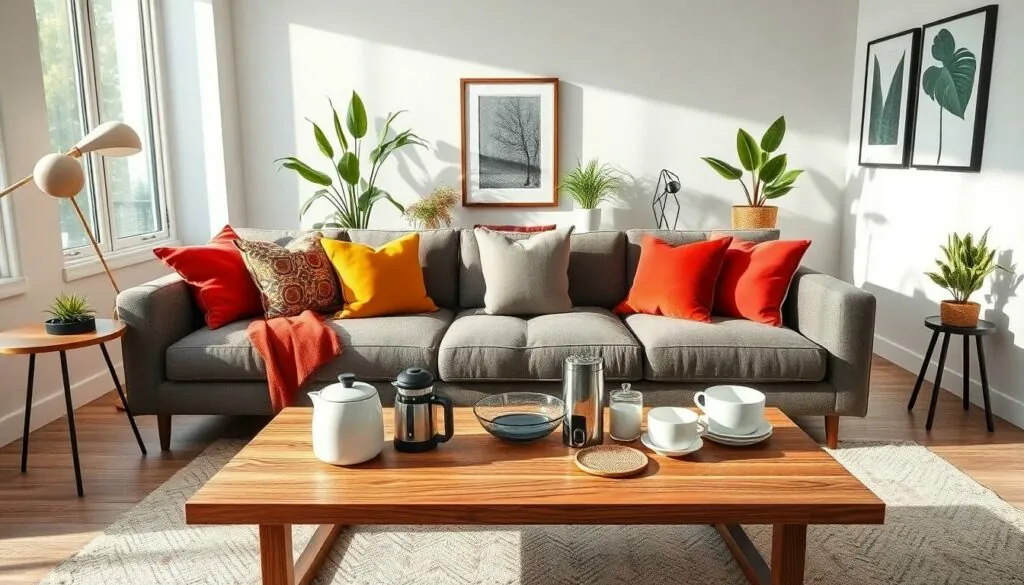Table of Contents
ToggleIn a world where home goods can make or break your living space, staying updated is essential. From quirky kitchen gadgets to stylish decor that screams “I’ve got my life together,” the latest trends in home goods are nothing short of exciting. Who knew that a throw pillow could spark joy or that a cutting board could be the centerpiece of a dinner party?
Latest Trends in Home Goods News
Staying abreast of trends in home goods reveals exciting developments. These innovations shape living spaces, influencing both style and practicality.
Sustainable Products
Sustainable home goods have gained popularity. Consumers prioritize eco-friendly products that minimize environmental impact. Brands now offer biodegradable kitchenware, recycled textiles, and non-toxic cleaning supplies. Such items not only enhance aesthetics but also contribute to a greener lifestyle. Homeowners express interest in locally sourced materials, which support regional economies. Overall, sustainable options fulfill a dual purpose by combining style with responsibility.
Smart Home Devices
Smart home devices remain at the forefront of home goods innovation. These technologies enhance convenience and often increase energy efficiency. From smart thermostats to voice-activated lighting systems, options provide control at users’ fingertips. Many homeowners appreciate security features like smart cameras and doorbells, which offer peace of mind. Integration with voice assistants further streamlines management of various devices. As smart technology evolves, it continues to transform everyday living into an efficient and enjoyable experience.
Major Industry Players
The home goods industry experiences continuous innovation through various key players. Market leaders engage actively in product development, enhancing consumer choices with quality and style.
New Product Launches
Recent product launches focus on sustainability and functionality. Brands introduce items like bamboo kitchenware and organic cotton linens, appealing to eco-conscious consumers. Unique designs in throw pillows and kitchen gadgets also attract attention, showcasing versatility and aesthetics. Innovative smart home devices from major manufacturers further enhance users’ experiences, offering simplified controls and energy-saving features.
Market Trends
Trends indicate a shift towards sustainable practices within the home goods sector. Research shows that more than 60% of consumers prefer eco-friendly products, driving brands to adapt their offerings. Popular styles include minimalist designs and multifunctional items catering to smaller living spaces. Additionally, smart home integration continues to grow, reflecting consumer interest in convenience. Overall, the increasing emphasis on sustainability and technology shapes the future landscape of home goods.
Consumer Preferences
Consumer preferences in home goods are increasingly evolving, driven by a blend of sustainability, practicality, and affordability.
Eco-Friendly Choices
Shoppers favor eco-friendly products that align with their values. Brands are responding by offering biodegradable kitchenware and recycled textiles. These items not only enhance aesthetics but also contribute to a greener lifestyle. Consumers seek products made from sustainable materials, signaling a strong market trend. Bamboo kitchenware and organic cotton linens appeal to those prioritizing environmental impact. Many are willing to invest in items that promote sustainability, reflecting a shift towards more conscious purchasing decisions.
Budget-Friendly Options
Affordability remains a major factor in consumer decision-making. Many consumers look for budget-friendly home goods that do not compromise on quality. Stores frequently showcase sales and discounts, making it easier for shoppers to find stylish items within their budget. Manufacturers are also creating multifunctional products designed for smaller living spaces, allowing for versatility without overspending. Consumers now prioritize value, ensuring they get the most for their money while maintaining a stylish home.
Challenges in the Home Goods Market
Challenges in the home goods market are impacting both consumers and manufacturers. Supply chain disruptions occur frequently, affecting the availability of materials needed for production.
Supply Chain Issues
Supply chain issues significantly hinder the home goods industry. Manufacturers often face delays due to shortages of raw materials. Shipping bottlenecks lead to extended wait times, frustrating consumers eager for new products. Import tariffs also increase costs, which can be passed on to shoppers. Compounded by these factors, logistics complications create uncertainty in delivery timelines. Despite these obstacles, brands strive to maintain product availability by diversifying sourcing and adapting operational strategies. These adjustments may also promote local manufacturing, which can mitigate some delays.
E-Commerce Impact
E-commerce impacts the home goods market in substantial ways. Online shopping has surged, accelerating demand for diverse product offerings. Traditional retailers adapt by enhancing their online platforms and improving shipping options. As consumers migrate online, they seek convenience and competitive pricing, compelling brands to streamline their operations. Social media influences purchasing decisions, with targeted ads showcasing home goods and driving sales. Enhanced virtual experiences, such as augmented reality tools, allow shoppers to visualize products in their homes. These trends reshape how manufacturers approach marketing, placing a premium on an engaging online presence.
Staying informed about home goods news is essential for anyone looking to enhance their living space. As trends evolve towards sustainability and smart technology, consumers are empowered to make choices that reflect their values. The rise of multifunctional and eco-friendly products ensures that style and practicality go hand in hand.
Challenges like supply chain disruptions may impact availability, but brands are adapting to meet consumer needs. The shift towards e-commerce and the influence of social media are reshaping the shopping experience, making it easier to find the perfect items. Embracing these trends allows individuals to create a home that’s not only beautiful but also aligned with modern values.




